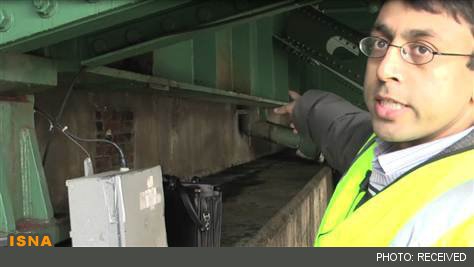 TEHRAN (ISNA)- An Iranian researcher Mehdi Kalantari at Maryland University has devised a new method preventing bridge collapse, developing a network of wireless sensors which send data to the central server about flexibility and strength of bridges.
TEHRAN (ISNA)- An Iranian researcher Mehdi Kalantari at Maryland University has devised a new method preventing bridge collapse, developing a network of wireless sensors which send data to the central server about flexibility and strength of bridges.Nearly six years following the bridge disaster in Minneapolis, structures keep failing, including the I-5 bridge in Washington and buildings in both Philadelphia and Bangladesh.
Each of these could have been prevented with Resensys LLC's real-time, comprehensive, wireless, low-cost and low-maintenance structural health detection system.
"In most cases, before a bridge or building collapses, measureable, meaningful changes occur on the structure," said Resensys President and CTO Mehdi Kalantari.
"Our technology provides a strong tool for the early and efficient detection of these changes. Whether some portion of the structure is overstrained or deformed, irreversible shifts or transformations can be detected with our technology way ahead of an actual failure so that repairs, and/or adjustments, can be made."
Comprised of small, networked sensors installed strategically on a bridge or building, Resensys' system monitors a broad range of factors, including strain, acceleration, vibration, displacement, deformation, tilt and inclination, temperature and humidity, to ensure that a structure is sound.
Each networked sensor quietly and continuously gathers data, after which it is aggregated and sent wirelessly to a data center, where it is continually analyzed.
When a structural issue is detected, alerts are sent out to maintenance or repair engineers at the first hint of a problem.
Resensys' sensors can be energy self-sustained, drawing their own power from ambient light and radio waves, or battery-operated. Both types of sensors last, maintenance-free, for decades.
By ISNA
The Iran Project is not responsible for the content of quoted articles.











